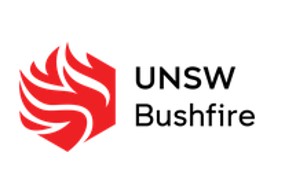This page shows current Alerts for Blow-Up Fire Event potential.ISSUE DATE:
This is an Operational Tool. | Current daily SSTA charts (NOAA Coral Reef Watch) Click maps to see at full size on NOAA site. 

|
LEVEL 1 | Current Alert Status:  NO ALERT. [Click on image to enlarge.] ANALYSIS:No alert is in place. Elevated fire danger is less likely. The recent East Coast Low put heavy rain into many areas. | ||
LEVEL 2 | Current Alert Status:  NO ALERT.ANALYSIS: We have entered Winter, so are less likely to see elevated fire danger.  | ||
LEVEL 3
|
It is recommended that FBANs and other technical specialists learn more about BUFEs. Operations at Level 3 require use of the BUFO2 model to assess the potential for a BUFE during an on-going fire. This requires a series of data feeds specified in the model. It is suggested that FBANs should skill-up on using the BUFO2 model.
Click here for the BUFO2 worksheet.Click here for a PowerPoint presentation on BUFO2, from a workshop at the AFAC21 Conference.Could anyone using the spreadsheet during the HPF trail please copy their results to us. | ||
| Page prepared by: Adjunct Professor Rick McRae UNSW Canberra School of Science Bushfire Research Group r.mcrae@unsw.edu.au |  
|
BASISThis work is based on both analyses of data from Black Summer and operational work. The structure of the four-tier Hierarchical Prediction System is designed to progress into smaller-scales of timeframe and function, shifting from seasonal outlook to incident operations: | ||
 HPF is described in a peer-reviewed paper in the October 2023 edition of the Australian Journal of Emergency Management. A follow-up paper reports on HPF performance in the following year. |
LEVEL 2 SOURCE DATAThe table and map below describe the stream flow reference sites used. | ||

| ||

| . | |
|
| 1. Clyde R at Brooman (site ID 216002) Min. level = 0.40 m. | 
| ||
|
2. Macdonald R at Howes Valley (site ID 212021) Min. level = -0.10 m. This site has questionable data - the river is notorious for silting up after major wildfires. | 
| ||
|
3. Goobarragandra R at Macs Crossing (site ID 41000261) Min. level = 0.90 m. | 
| ||
|
4. Macalister R at Glencairn (site ID 225219) Min. level = 0.30 m. | 
| ||
|
5. Towamba R at Towamba (site ID 220004) Min. level = 0.35 m. | 
| ||
|
6. Kowmung R at Cedar Ford (site ID 212260) Min. level = 0.40 m. | 
| ||
|
7. Mann R at Mitchell (site ID 204014) Min. level = 0.20 m. | 
| ||
|
8. Clarence R at Paddys Flat (site ID 204051) Min. level = 0.55 m. | 
| ||
|
9. Hastings R at Mt Seaview (site ID 207015 Min. level = 0.55 m. | 
| ||
|
10. Barrington R at Bobs Crossing (site ID 208001) Min. level = 0.58 m. | 
| ||
|
11. Murrumbidgee R above Tantangara Reservoir (site ID 410535) Min. level = 0.45 m. | 
| ||
|
12. Tooma River at Pinegrove (site ID 401014B) Min. level = 0.88m. | 
| ||
|
13. Shoalhaven R at Hillview (site ID 215208) Min. level = 0.45 m. | 
| ||
|
14. Queanbeyan R at Tinderry (site ID 410734) Min. level = 0.70 m. | 
| ||
|
15. Reedy Creek (site ID 403221) Min. level = 0.22 m. | 
| ||
|
16. Wadbilliga R at Wadbilliga (site ID 218007) Min. level = 0.75 m. | 
| ||
|
17. Gudgenby R at Mt Tennent (site ID 410731) Min. level = 0.45 m. | 
| ||
|
18. Hopkins R at Ararat (site ID 236219) Min. level = 0.075 m. | 
| ||
ARCHIVE--- End of list --- |